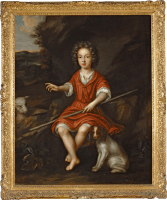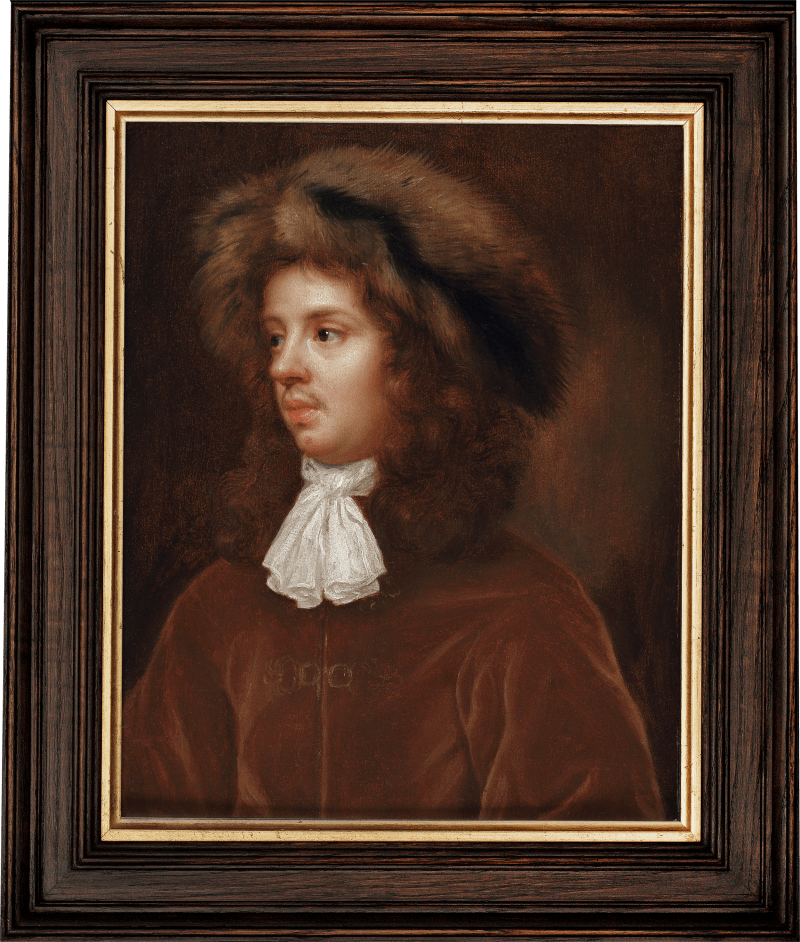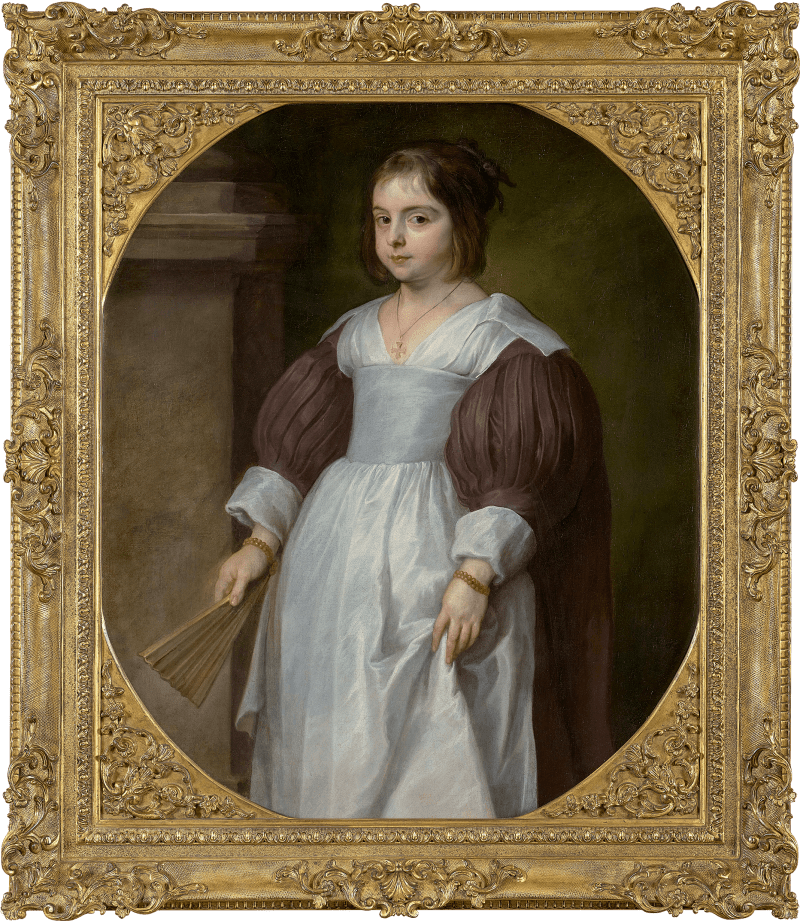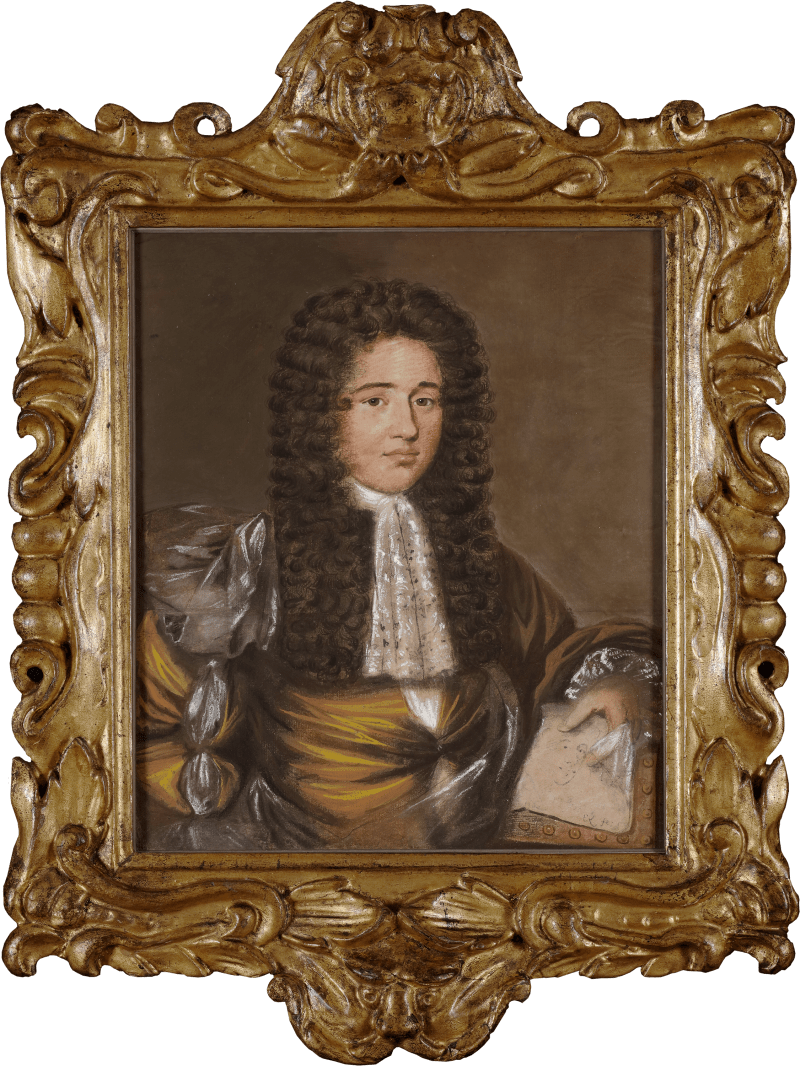

Mary Beale
(1633-1699) A Young Boy Seated in a LandscapeProvenance
Possibly by descent in the family of Dr William Hayley (c.1657–1715);
Captain George Godfrey (1841–1890);
Grace Harriet Godfrey (d.1938), presumably by descent from the above;
London art market, 1980s;
Private collection, UK;
The Pedestal, 5 July 2022, lot 207 (as ‘Follower of Sir Peter Lely [1618–1690], Charles, 1st Duke of St Albans’);
Philip Mould & Company, London, acquired from the above.
Although the sitter’s identity is unknown at present, this young boy was evidently part of Beale’s close circle of ecclesiastical patrons. The boy is shown dressed in classical robes and seated in a verdant landscape, gesturing to a steepled church in the distant landscape; the subject is ostensibly secular, albeit with Christian undertones. During a time heavily influenced by religious beliefs, subtle allusions to faith were frequently incorporated into portraiture. In this instance, the young boy is shown with a lamb and crook, the attributes of St John the Baptist, who lived an austere life in the wilderness.
It is impossible to overstate the importance of religion in Beale’s life and the influence it had on her portraiture. She was born into a well-to-do Puritan household and throughout her life placed a strong emphasis on human relationships, such as friendship, family and community. Beale’s circles of friends included clergymen, intellectuals and artists, and each year she paid ten percent of...
Although the sitter’s identity is unknown at present, this young boy was evidently part of Beale’s close circle of ecclesiastical patrons. The boy is shown dressed in classical robes and seated in a verdant landscape, gesturing to a steepled church in the distant landscape; the subject is ostensibly secular, albeit with Christian undertones. During a time heavily influenced by religious beliefs, subtle allusions to faith were frequently incorporated into portraiture. In this instance, the young boy is shown with a lamb and crook, the attributes of St John the Baptist, who lived an austere life in the wilderness.
It is impossible to overstate the importance of religion in Beale’s life and the influence it had on her portraiture. She was born into a well-to-do Puritan household and throughout her life placed a strong emphasis on human relationships, such as friendship, family and community. Beale’s circles of friends included clergymen, intellectuals and artists, and each year she paid ten percent of her income from each portrait into a ‘Pious and Charitable Account’, which was maintained even when the family was in financial difficulties.[1]
The majority of surviving works by Beale on this scale show a heavy reliance on the compositional designs of her contemporary, Sir Peter Lely. In some instances, she reproduced his compositions so precisely that, in the past, their authorship has been confused. Lely was the most celebrated portrait painter of the Restoration period, so his influence is to be expected. The present work, however, shows a freedom of expression seldom seen in Beale on this scale. The composition is ambitious yet not overly ostentatious and is treated with a level of restraint befitting a patron conscious of appearing overindulgent. It is perhaps the case that Beale’s ecclesiastical patrons were less domineering and granted her a wider scope for creative expression, as opposed to her higher-status sitters, who wanted the Lely ‘look’ at a Beale price point. The quality of her output on this scale can vary, although the present work demonstrates the deft combination of confidence and sensitivity one expects in a work wholly by her hand.
The sitter remains unidentified at present, although the portrait is thought to have been passed down by descent in the Hayley family. Dr William Hayley (c.1657–1715) was a contemporary of Beale and was chaplain to her friend and patron Sir William Trumbull on his trips to Paris in 1684 and Constantinople in 1686–91. Hayley did not marry until 1696, which rules out the possibility that this painting might portray one of his children, but it could be an as yet unidentified relation or a child from his close circle of friends.
[1] Draper 2020, pp.206–07.











